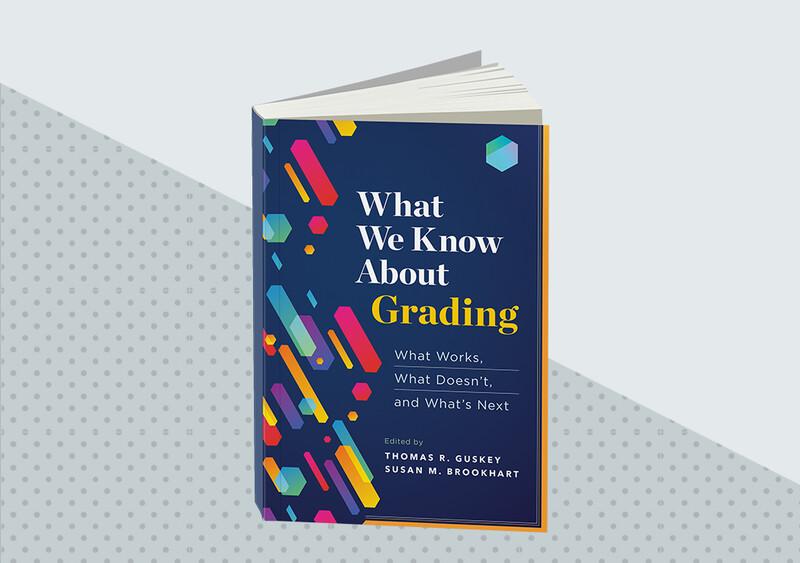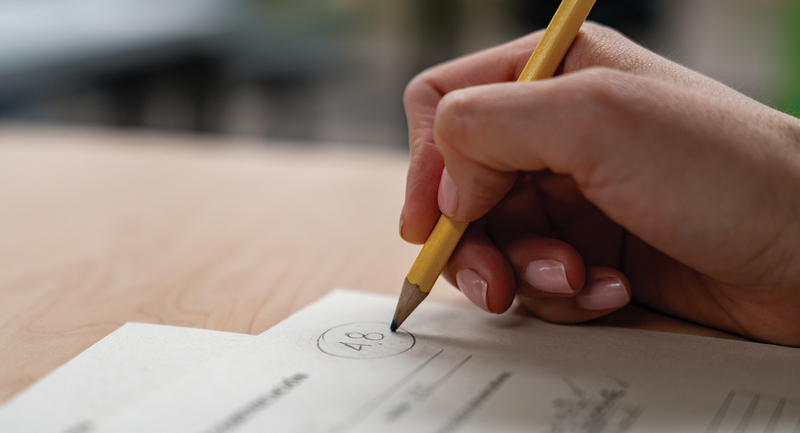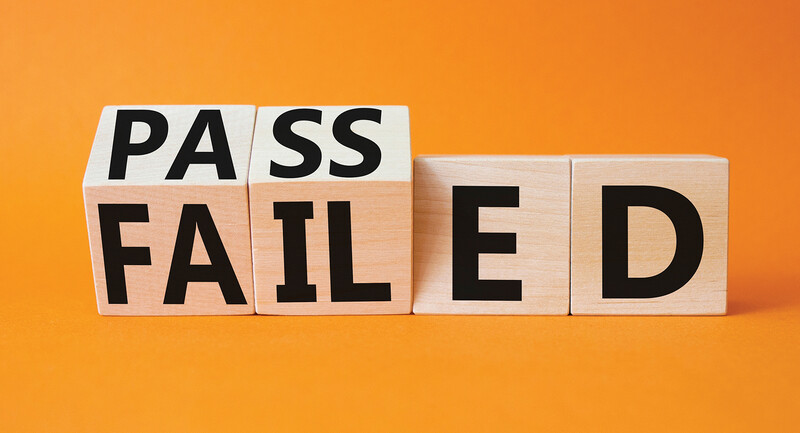Few topics prompt more debate among educators today than whether to allow students to retake assessments. Proponents argue that reassessment options reduce test anxiety and allow students to demonstrate more fully what they’ve learned. Critics contend that allowing reassessments lessens students’ motivation to prepare for assessments and encourages poor study habits that leave students ill-prepared for college and careers. At the very least, they believe students should have to meet stringent requirements to gain the privilege of a reassessment. Many teachers also question the fairness of assigning the same grade to students who prepared for the initial assessment and achieved a high score, as to students who didn’t prepare but then, with review and additional study time, attained a high score on a reassessment.
Compounding the problem is the inconsistent advice teachers receive on how to manage the reassessment process. Because most writers and consultants on assessment lack a thorough understanding of the theoretical premises and foundational research supporting the use of reassessments, the policies and practices they recommend are often untested and, in many cases, untenable. Resulting implementation problems can leave teachers frustrated, student motivation diminished, and the practice of reassessment eventually abandoned.
To successfully implement reassessment options, educators must have in-depth knowledge of the theory and research that justifies the reassessment process, along with clear notions of the elements that must be in place to ensure it works.
The Origin of Reassessment Practices
Although the roots of reassessment can be traced to the writings of early education philosophers such as John Amos Comenius, Johann Heinrich Pestalozzi, and Johann Friedrich Herbart (Bloom, 1974), most modern thinking behind the practice stems from the work of Benjamin Bloom. In the late 1960s, Bloom observed that the assessments most teachers use at the end of learning units serve mainly as evaluations that confirm for which students the teachers’ instruction was appropriate and for which it wasn’t. He believed, however, that if those same assessments could be used as part of the instructional process to provide students with feedback on their learning—and teachers with feedback on their teaching—they could become powerful learning tools. To underscore this informing purpose, Bloom suggested labeling these assessments “formative assessments” (Bloom, 1968; Bloom, Hastings, & Madaus, 1971).
Assessments alone do little to improve student learning or teaching quality. What counts is what happens after the assessment.
Bloom emphasized, however, that assessments alone do little to improve student learning or teaching quality. What counts is what happens after the assessment. Just as regularly checking your weight or blood pressure does little to improve your health if you do nothing with the information, what matters most with formative assessments is what students and teachers do with the results.
Bloom stressed that, to bring improvement, formative assessments must be followed by high-quality, corrective instruction designed to remedy the specific learning errors the assessments identified. John Hattie and Helen Timperley (2007) refer to this as the “second part” of teaching. But unlike reteaching—simply repeating the original instruction and hoping for better results—correctives present the concepts to be learned in new ways and engage students in different learning experiences. This “just-in-time” correction prevents minor learning difficulties from accumulating and becoming major learning problems. It also gives teachers a practical means to vary and differentiate their instruction to meet students where they are. As a result, many more students master the important learning goals or standards in each unit and gain the necessary prerequisites for success in later units.
Bloom further emphasized that the correctives initially must be conducted in class, by the teacher. Because few students have experienced assessments as learning tools or understand how to use assessment results to identify and then remedy their learning difficulties, teachers need to initially guide students through the corrective process. Students need to see the benefits of the process firsthand and experience the success it brings.
While the teacher directs the corrective work, Bloom recommended that students who performed well on the initial assessments be engaged in special enrichment activities. Rather than simply moving ahead, these students deepen their understanding through self-selected, rewarding learning extensions and inquiry experiences, perhaps developing a special project or report, engaging in challenging learning games, or any variety of intriguing, problem-solving tasks. Many teachers find activities developed for gifted and talented students are helpful resources for enrichment. Students involved in enrichment also might choose to be a peer tutor to one of their classmates.
When the correctives are completed, after a class period or two, Bloom proposed that students who engaged in correctives be given a second, parallel formative assessment—for two reasons. First, the second assessment helps teachers determine if the correctives truly helped students remedy their learning difficulties. Second, and perhaps more important, it gives students a second chance at success and, hence, has great motivational value. This parallel reassessment addresses the same learning goals or standards as the initial assessment but asks questions in a different way or uses an alternative format. This encourages students to focus on learning important concepts and skills rather than simply memorizing answers to specific questions. Bloom (1971) labeled this process of feedback, corrective, and enrichment as “mastery learning.” Figure 1 outlines the basic steps in the mastery learning process.
Seven Practices to Avoid
The growing popularity of mastery learning, and especially formative assessments, has led to the publication of numerous articles, videos, and blogs about reassessments, redos, retakes, and second-chance assessments. Despite the good intentions of the authors of most of these materials, their recommendations tend to be personal opinions of what they believe might work, rather than research-supported practices that have been shown to work. In some cases, the practices they recommend run counter to the theory of mastery learning and diminish the likelihood of the practice succeeding.
The following are reassessment practices that many educators’ experience and research on mastery learning show do not work.
1. Expecting students to do correctives on their own. As noted earlier, few students have experience using assessments as learning tools to identify and then correct their individual learning difficulties. Asking students to independently correct their learning errors is like saying to students, “I tried my best to teach you, but I wasn’t successful. So now it’s up to you to learn on your own!” This includes having them complete correctives as homework or in a special study session outside class. Because most students have never experienced the success that corrective work brings, teachers must initially guide them through the process. Only after students gain this experience, understand how the process works, and see the personal benefits that result, can teachers allow students more independence in completing corrective activities.
2. Making correctives voluntary. Lacking personal experience of how correctives lead to learning success, many students remain reluctant to take on the extra work. But when they complete the corrective work in class, under the teacher’s direction, and see improvement in their performance, they realize the conditions for success are within their grasp. They become more willing to take the steps necessary to achieve that success because they’ve seen how it works (Guskey, 2020). At this point, teachers can allow students more choice and greater variety in corrective options.
3. Proceeding to more advanced units before corrective work is completed. Going on to subsequent units before students complete their corrective work puts those students who must do correctives in double jeopardy: They must work to remedy problems from the past while trying to keep up with new concepts and skills. These students are the least likely to be able to do that. Experienced mastery learning teachers know that struggling students must complete correctives and remedy their current difficulties before taking on the challenges of a new unit, especially in classes where learning units are sequential and each new unit builds on concepts presented in earlier units. At the same time, students who don’t need corrective instruction work on enrichment activities until the class is ready to proceed to the next unit more or less as a group.
4. Failing to provide any incentive for success on initial assessments. Students need to see specific advantages in preparing well and performing as well as possible on initial assessments. Despite the contentions of some writers, simply avoiding the agony of having to take a reassessment seldom proves sufficient reward. While the experience of initial success can be gratifying in itself, most teachers find the opportunity to engage in truly rewarding and challenging enrichment activities separate from regular classroom instruction provides a key additional incentive. Especially when students understand the mastery learning process and have some choice in selecting their enrichment activities, they’re far more motivated to do well on initial assessments.
5. Limiting scores on the reassessment. To motivate students to put forth their best effort on initial assessments, some teachers place limits on the scores students can attain on reassessments. For example, a teacher might make the highest letter grade or score students can receive on a reassessment a B, or a 3 on a 4-point scale. Not only does this defeat the purpose of mastery learning, it miscommunicates students’ true level of performance. If students take the corrective process seriously, remedy their learning difficulties, and score well on a reassessment, their score or grade should accurately reflect that level of performance.
6. Making students “pay a price” to take the reassessment. To further motivate students to prepare for an initial assessment, some teachers impose contingencies on students’ opportunities to receive the reassessment. For example, in addition to students doing the corrective work and submitting evidence that they’ve done so, some teachers require students to have their parents sign the initial formative assessment. Others require students to submit a formal request, signed by a parent, asking the teacher for the opportunity for a reassessment. Certainly, parents and families should be informed of students’ performance on all assessments, even purely formative ones that are not counted as part of students’ grades. But while signing assessments or permission requests may seem an innocent way of involving parents, it poses a major obstacle for students whose parents may not understand the nature of the assessment, are unfamiliar with the reassessment process, or are non-English speakers who are justifiably reluctant to sign any form they may not fully understand (Shiffman, 2019). Students who follow through with corrective work and remedy their misconceptions or lack of skill with a learning target should have the opportunity to demonstrate what they’ve learned without having to overcome these additional obstacles.
7. Making the reassessment more difficult. Bloom (1968; 1971) stressed that any reassessment should be “parallel” to the initial assessment, meaning it should address the same concepts, assess the same cognitive skills, and be of comparable difficulty. Making the second assessment more difficult would be like teaching students to jump over a three-foot hurdle, helping those who struggle to improve their jumping technique, and then asking them to try again, but now raising the hurdle to four feet! Such a practice defeats the purpose of mastery learning and is blatantly unfair to students.
Often-Heard Concerns with Offering Reassessments
Teachers who are considering trying mastery learning and reassessments often express concerns about the process. Here are three common concerns and how they can be addressed.
1. The extra time will cut into curriculum coverage. Many teachers worry that taking class time for correctives and reassessments will require them to sacrifice curriculum coverage. And, indeed, early units where teachers implement this process do require more time. Most teachers find, however, that as students become familiar with the corrective process and realize its benefits, class time for correctives can be reduced and students can complete many of their correctives as homework, with some guidance or resources from the teacher to help those students learn concepts they missed the first time and move beyond their misconceptions. Furthermore, by not allowing minor errors to become major learning problems, teachers ensure students are well prepared for subsequent learning tasks, so instruction in later units can progress more rapidly with less time spent on review. Research indicates that by pacing their instruction more flexibly—allowing more time for early units and using less time in later ones—most teachers can cover the same amount of material with mastery learning as with traditional assessment protocols with much higher levels of student success (Guskey & Pigott, 1988).
2. “But that’s not what life is like!” Other teachers believe that giving students a second chance fails to prepare them for the “real” world. They point out that a surgeon doesn’t get a second chance to perform an operation successfully and a pilot doesn’t get a second chance to land a jumbo jet safely. Because of the very high stakes involved, each must get it right the first time.
Professionals learn from their mistakes and improve their performance. Similar instructional techniques are used in nearly every professional endeavor.
But consider how these highly skilled professionals learned their craft. The surgeon’s first operation was performed on a cadaver—a situation that allows a lot of latitude for mistakes. Similarly, the pilot spent many hours in a flight simulator before ever attempting a landing in a real jumbo jet. Such experiences allowed these professionals to learn from their mistakes and improve their performance. Similar instructional techniques are used in nearly every professional endeavor. Only in schools do students face the prospect of one-shot, do-or-die assessments, with no chance to demonstrate what they learned from previous mistakes.
3. It makes grading less fair. Some teachers claim it’s unfair to offer the same high grades to students who require a reassessment as were awarded to students who performed well on the initial assessment. Certainly, students who did well initially should be recognized for their success and, as stated, given opportunities to extend their learning. But if a grade’s purpose is to describe how well students mastered specific learning goals or standards, and if students who engaged in correctives eventually demonstrate the same high level of mastery on a reassessment, don’t they deserve the same high grades?
Driver’s license exams offer a comparable example. Many people don’t pass their driver’s exam until their second or even third attempt. Should their driving privileges be restricted as a result? For example, should they be allowed to drive only in fair weather? Should their license indicate “Fair weather driving only.” Of course not! Because they eventually met the same high-performance standards, their driving privileges are no different. The same is true of medical board exams for physicians and the bar exam for attorneys.
Let’s Realize Bloom’s Dream!
The important question regarding reassessments isn’t really, “Should students get a second chance?” Rather, it is: “How can we best use assessments to help students improve their learning?” We also must keep in mind that assessments alone do little to improve student learning or teaching quality. What matters is what happens after the assessments and what teachers and students do with the results. If educators incentivize success on initial assessments by planning exciting, student-chosen enrichment activities, and guide initially less successful students in correcting errors in their learning revealed by low scores on an initial assessment, we’ll be much more likely to realize Bloom’s dream of having all students learn well.
Copyright © 2023 Thomas R. Guskey
What We Know About Grading
Effective grading policies and practices must be based on trustworthy research evidence.










